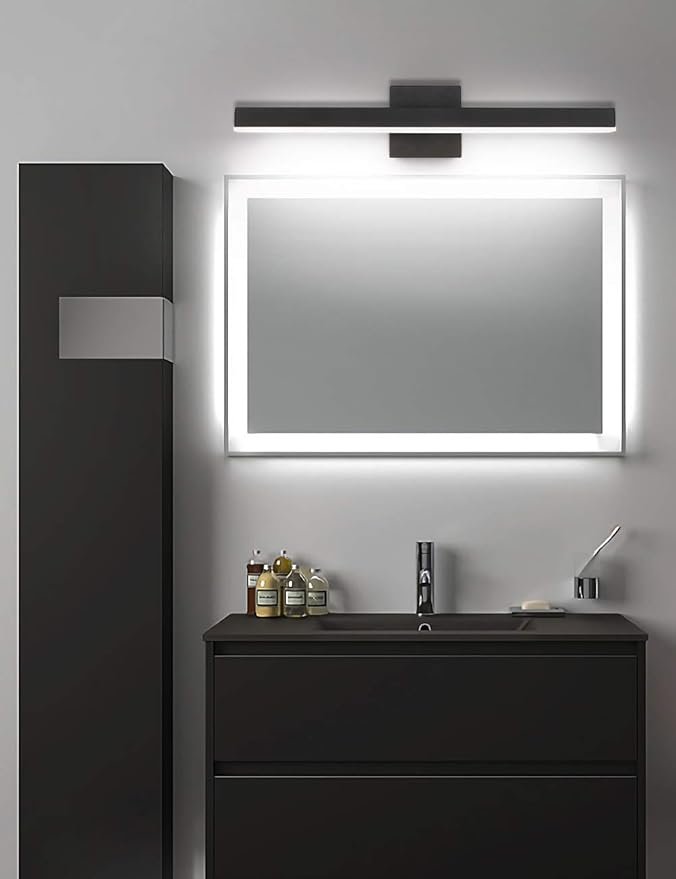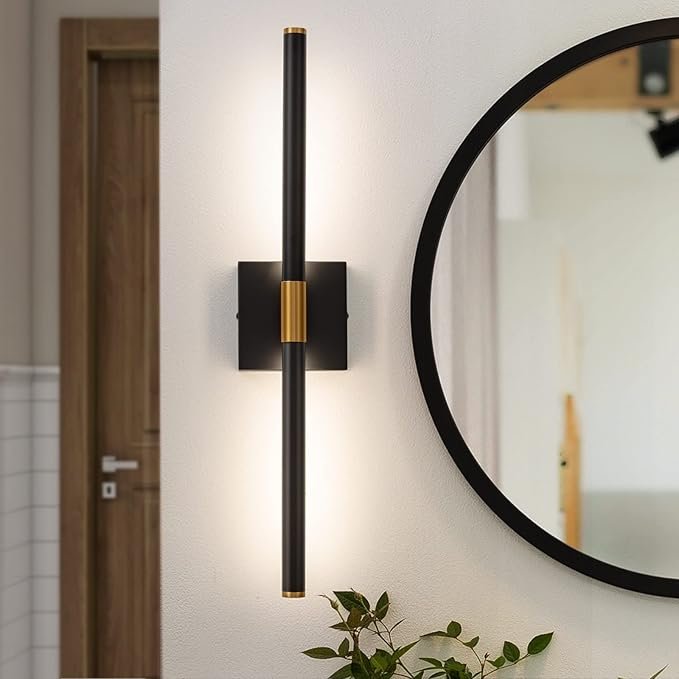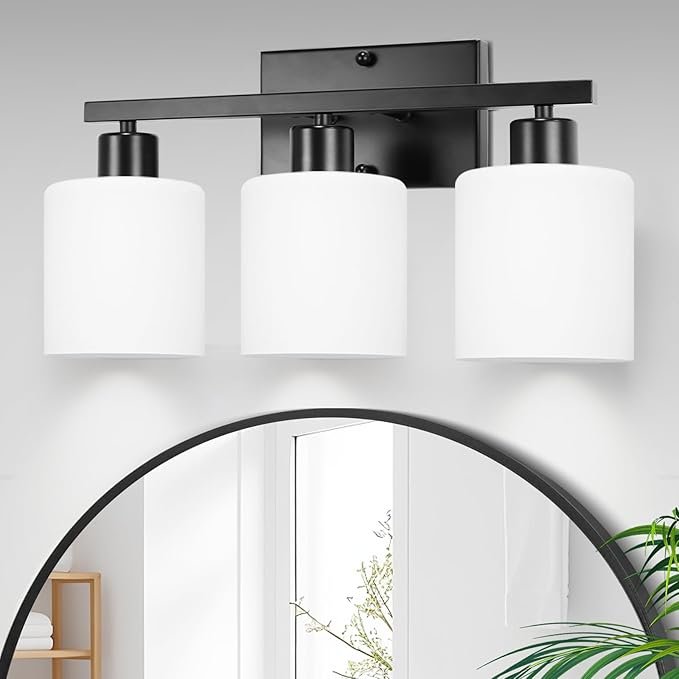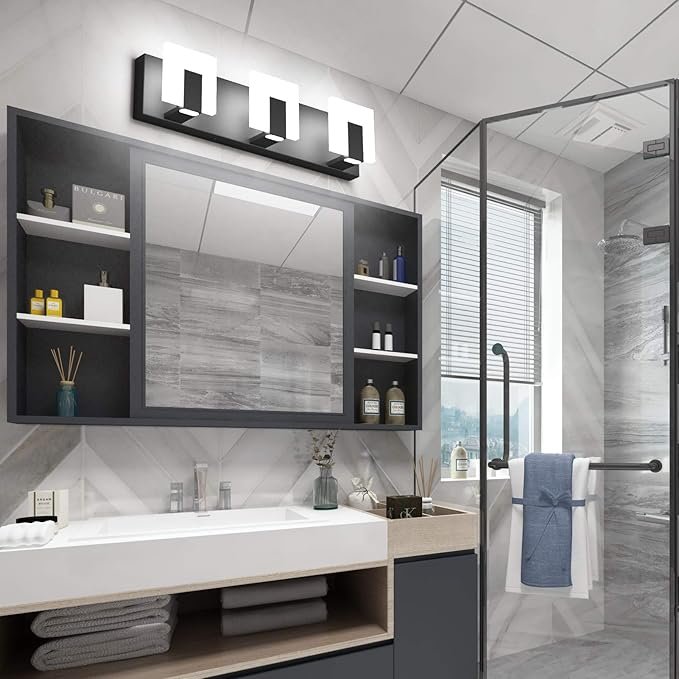
Understanding Bathroom Vanity Lighting
Bathroom vanity lighting is a crucial element of interior design that combines both functionality and aesthetics. It serves as an essential source of illumination for daily grooming tasks, ensuring that activities such as shaving, applying makeup, or styling hair can be carried out safely and effectively. Furthermore, the right lighting enhances the overall ambiance of the bathroom, contributing to a calm and pleasing environment. This dual purpose makes understanding vanity lighting an integral part of any bathroom design project.
One of the primary roles of bathroom vanity lighting is to provide sufficient light that diminishes shadows on the face, which is particularly important when standing in front of a mirror. Ideally, a layered lighting approach is recommended, combining ambient, task, and accent lighting to cater to various needs. Ambient lighting fills the entire space, task lighting focuses on areas where precision is required, and accent lighting can highlight architectural features or decorative elements. By thoughtfully incorporating these types of lighting, one can create a well-lit and appealing atmosphere.
Moreover, selecting appropriate bathroom vanity lighting is vital for safety as well. Bathrooms are unique spaces characterized by moisture, which can affect both the performance and the longevity of lighting fixtures. Using fixtures designed to withstand humid conditions can prevent potential electrical issues and hazards. Additionally, choosing energy-efficient options contributes to sustainability while potentially lowering utility costs. Ultimately, the aesthetics of the chosen lighting fixtures should align with the bathroom’s overall design theme, whether it leans toward modern, traditional, or eclectic styles. Thus, a knowledgeable approach to selecting bathroom vanity lighting is critical for both practical usage and creating a visually appealing space.
Assessing Your Bathroom Space
When selecting the perfect modern vanity light for your bathroom, it is crucial to start by accurately assessing your space. This initial evaluation will guide you in choosing the most suitable type of lighting that complements both the aesthetics and functionality of the room. Begin by measuring the dimensions of your bathroom, paying particular attention to the area where you intend to install the lighting fixture.
Next, evaluate the current fixtures already in place. Determine their heights and widths, as well as the overall design style of your bathroom. Consider whether these existing elements align with your desired look for a modern vanity light. This may involve scrutinizing the color scheme, materials, and textures present in your decor. A clear understanding of your current bathroom fixtures will aid in selecting a new light fixture that harmonizes with these components.
Moreover, consider the layout of your bathroom, focusing on the placement of the sink and mirrors. The vanity light you select should effectively illuminate the space, particularly around mirrors that require adequate lighting for tasks like shaving or applying makeup. Positioning is also essential; fixtures placed too high may cast unflattering shadows, while those that are too low can overpower the room’s aesthetics. Ideally, a modern vanity light should be positioned at eye level or slightly above, ensuring even and flattering illumination.
Finally, take into account any architectural features or obstructions that may influence your choice of fixtures. Elements such as cabinetry, windows, or bulkheads can affect light placement and overall brightness. By thoroughly assessing these aspects of your bathroom space, you can make an informed decision, selecting a modern vanity light that not only enhances your bathroom’s ambiance but also meets your practical needs.
Choosing the Right Style
When selecting the perfect vanity light for your bathroom, it is crucial to consider various modern styles that can enhance both functionality and aesthetics. Contemporary designs often feature sleek lines and modern materials, such as matte black finishes and polished chrome, creating a sophisticated ambiance. These fixtures can seamlessly integrate into bathrooms that adopt a clean, uncluttered theme.
The industrial style is another appealing option, characterized by exposed bulbs and raw materials like iron and wood. This rugged approach adds a touch of charm and can be particularly striking in urban-inspired spaces. Featuring Edison bulbs or fixtures with a metallic appearance will lend a sense of character while highlighting the unique architectural elements within the bathroom.
For those leaning toward a more rustic feel, farmhouse vanity lights present a warm and inviting option. Fixtures made from distressed wood paired with vintage-style bulbs evoke a sense of nostalgia, making them suitable for bathrooms with eclectic or country decor. In contrast, minimalist designs favor simplicity and function, focusing on unobtrusive fixtures that deliver task lighting without overwhelming the space.
To ensure a harmonious look, it’s important to coordinate the lighting style with the overall bathroom decor. For example, if your bathroom features modern tiles and sleek cabinetry, choosing contemporary or minimalist lighting will enhance that cohesive design. Conversely, if your space embraces vintage or rustic elements, industrial or farmhouse styles can complement the decor beautifully.
Ultimately, selecting the right vanity light involves assessing your personal style while also considering the design language of the bathroom. A thoughtful approach to both aesthetics and functionality will result in a well-coordinated and visually appealing lighting scheme.
Selecting the Appropriate Size
When it comes to selecting the appropriate size for a modern vanity light, understanding the dimensions of both your bathroom and the vanity itself is crucial. A well-selected light fixture should balance functionality with aesthetic appeal, ensuring that it complements the overall design without dominating the space. The first step is to measure the width and height of your vanity. Typically, the vanity light should span two-thirds to the full width of the vanity for optimal proportion. For instance, if your vanity measures 36 inches wide, a light fixture between 24 and 30 inches wide is generally recommended.
In addition to width, consider the height of the fixture as it relates to the ceiling height of the bathroom. Ideally, the bottom of the light should be positioned approximately 65 to 70 inches above the floor or aligned with the center of the mirror. This ensures that the illumination is effectively distributed across the face and does not create unwanted shadows, which can hinder practical tasks such as grooming or applying makeup.
Moreover, the scale and proportion of the light fixture should harmonize with other elements in the bathroom. For instance, if the room features large vanities or expansive mirrors, oversized fixtures can create visual balance. Conversely, in smaller bathrooms, selecting a compact or minimalist light can prevent the area from feeling cramped. Additionally, it’s important to take into account how the light fixture interacts with other design elements such as faucets, cabinetry, and tile. By thoughtfully considering these factors, you can ensure that your choice of vanity light enhances the space’s overall aesthetic while providing the necessary functionality.
Understanding Lighting Types and Bulb Options
Choosing the right lighting for your bathroom’s vanity is essential for both aesthetics and functionality. There are three primary types of lighting to consider: ambient, task, and accent lighting. Ambient lighting serves as the general illumination of the room, providing a uniform brightness to ensure safety and comfort. This type typically comes from overhead fixtures or wall-mounted lights. Task lighting, on the other hand, is designed to facilitate specific activities, such as applying makeup or shaving. Vanities often require dedicated task lighting, which can be achieved through wall sconces or illuminated mirrors placed around the vanity area. Lastly, accent lighting highlights decorative features or architectural elements, enhancing the overall ambiance of the space.
When it comes to selecting light bulbs for your vanity lighting, understanding color temperature and brightness is essential. The color temperature, measured in Kelvin (K), affects how the light appears in the space. A warmer temperature, typically between 2700K to 3000K, creates a cozy and inviting atmosphere ideal for bathrooms. Conversely, a cooler temperature, ranging from 4000K to 5000K, provides a bright and energizing environment, beneficial for intricate tasks such as grooming.
Brightness is measured in lumens, and it is crucial to select bulbs with an appropriate lumen output for your vanity lighting. For effective task lighting, aim for around 500-1000 lumens for the area to ensure visibility while maintaining comfort. Additionally, the choice between LED and incandescent bulbs significantly impacts energy efficiency and longevity. LED bulbs are favored for their low energy consumption and long lifespan, making them a cost-effective and environmentally friendly option. Incandescent bulbs, while providing warm light, have a shorter lifespan and higher energy costs. Overall, choosing the right type of lighting and bulb options is vital for achieving an effective and aesthetically pleasing bathroom vanity setup.
Evaluating Mounting Options
When selecting the perfect modern vanity light for your bathroom, evaluating the various mounting options is crucial. The right mounting style not only enhances the aesthetic appeal of the space but also contributes to effective lighting that meets your daily needs. There are several mounting styles to consider, including wall-mounted fixtures, above-the-mirror installations, and integrated lighting solutions.
Wall-mounted lights are a popular choice due to their versatility and ease of installation. These fixtures can be placed on either side of the mirror or above it to create an inviting ambiance. Placing lights on both sides of the mirror helps to eliminate shadows on the face, which can be particularly beneficial for tasks such as shaving or applying makeup. This dual-lighting approach is often recommended by designers for achieving balanced illumination.
Another common option is to install lights above the mirror. This setup allows for broader light distribution and can be a striking focal point in your bathroom. It is essential to select a fixture that complements the size of the mirror and the overall decor. Sizing is important here; a light that is too large may overwhelm the space, while one that is too small may not provide sufficient brightness.
Integrated lighting, such as LED strips or panels, has gained popularity because it offers a sleek and modern look while also being energy-efficient. These types of lights can be installed within the structure of the cabinetry or around mirrors, delivering a subtle glow that might be preferable for a minimalist design. When choosing this option, consider the color temperature, as warm whites are often recommended for a soothing atmosphere, while cooler whites may be used for a more contemporary feel.
Ultimately, the selection of mounting style should reflect not only personal preference but also the overall functionality required in the space. By assessing the specific layout of your bathroom and its lighting needs, you can make an informed decision that enhances both form and function in your design.
Considering Energy Efficiency
Choosing energy-efficient lighting solutions for your bathroom is essential not only for reducing your utility bills but also for minimizing your environmental impact. Modern vanity lights often utilize advanced technologies that can significantly lower energy consumption while providing ample illumination. When selecting fixtures, it is prudent to look for options that incorporate LED technology, which is known for its long lifespan and energy-saving capabilities. Compared to traditional incandescent bulbs, LEDs can consume up to 80% less energy, offering a more sustainable lighting choice.
In addition to choosing the right type of bulbs, consider the overall design and fixture types when making your selection. For instance, fixtures that allow for dimming can contribute to energy conservation, as they enable you to adjust the brightness according to your needs. The ability to dim lights not only enhances the atmosphere of your bathroom but also ensures that unnecessary energy is not wasted during less busy times, further reducing your energy bill.
Moreover, seeking out products that carry certifications, such as Energy Star, is a wise approach to ensure energy efficiency. Fixtures that meet Energy Star criteria are critically tested for their energy performance and are often more reliable than non-certified options. By opting for Energy Star-rated fixtures, you are making a responsible choice that leads to lower electricity usage without compromising on quality or style.
Lastly, don’t overlook the importance of proper maintenance and cleaning of your vanity light fixtures. Ensuring they are free of dust and grime will maximize their effectiveness, allowing them to operate at peak performance. This may seem trivial, but maintaining clean fixtures can enhance their efficiency and longevity, leading to further energy savings.
Budgeting for Your Vanity Light
When selecting the perfect modern vanity light for your bathroom, budgeting is a critical factor that can influence your overall satisfaction with the purchase. The first step in the budgeting process is to determine the scope of your project. This includes not just the cost of the fixture itself but also the expenses related to installation and maintenance. By taking a holistic approach to budgeting, you can ensure that you are well-prepared for the financial commitment involved in upgrading your bathroom lighting.
Start by researching various vanity light options across different price ranges. Modern vanity lights can vary significantly in cost, influenced by factors such as design, brand, and material quality. It’s essential to set a realistic budget that accommodates a range of price points, allowing flexibility while shopping. A mid-range light fixture can often provide a nice balance between quality and affordability, serving as a wise investment in your home’s aesthetic appeal.
Installation costs should also be factored into your budget. If you are hiring a professional electrician, this may add considerable expense. However, if you are handy and opt for a more straightforward installation, you might save on costs. Moreover, it’s prudent to account for any additional fixtures or components that may be required for your specific space, such as dimmers or updated wiring.
Lastly, consider maintenance costs associated with your chosen vanity light. Some fixtures require more upkeep than others, including cleaning or replacement of bulbs. By taking all these elements into account within your budget, you can make a well-informed choice that meets both your aesthetic desires and financial constraints, ensuring a successful upgrade to your bathroom lighting solution.
Installation Tips and Final Checks
Installing a modern vanity light in your bathroom requires careful attention to detail to ensure both functionality and safety. Before beginning the installation process, it is crucial to turn off the power at the circuit breaker to mitigate risks of electric shock. Always use appropriate personal protective equipment, such as gloves and safety glasses, while handling electrical components.
When proceeding with the installation, first, familiarize yourself with the manufacturer’s instructions provided with the vanity light fixture. These guidelines will vary based on the type of light and installation requirements. Typically, you will need to secure the mounting bracket to the wall, connect the electrical wires, and attach the fixture according to the provided specifications. If you encounter outdated wiring or unforeseen structural issues in your bathroom, it is advisable to consult a professional electrician. This can prevent potential hazards and ensure compliance with local electrical codes.
Once the installation is complete, performing a few final checks is essential. First, you should ensure that all connections are tight and secure, minimizing the risk of short circuits. After verifying the fixtures are installed correctly, restore the power at the circuit breaker and test the light. If you find that the vanity light does not illuminate, check the wiring and connections, as common issues often stem from loose wires or faulty connections.
Additionally, assess the vanity light’s placement and brightness to determine if it adequately illuminates your workspace at the vanity. Proper lighting should provide sufficient visibility for daily routines while enhancing the overall ambiance of the bathroom. If any issues persist after troubleshooting, refer to the warranty information or seek professional assistance to ensure the light’s longevity and performance.








